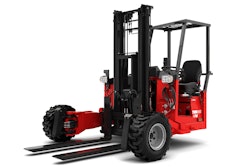
One of the many concerns on the minds of retailers and e-commerce businesses is how they must stay in front of constantly changing consumer expectations and also what those expectations are. Consumer behavior is increasingly shaping every facet of successful retailers’ supply and demand chains, so it has become clear that fulfillment operations face a brave new world that requires a much more strategic and intense focus on consumer expectations. The shared view is that material handling professionals must proactively address the solutions in today’s advanced warehouses and distribution centers as they play an increasingly important role in retailers’ efforts to be customer-centric in practice and execution.
To start, one must look back, once again, to the event that changed everything.
To say the pandemic changed everything is cliché, but true.
Well before the pandemic, the use of advanced systems in materials handling operations were already helping brands meet the demands of consumer behavior that impacted fulfillment operations. Out of necessity, automation emerged as a central feature of the distribution centers serving the best-known retail brands with the most items to move.
The pandemic dramatically accelerated this evolution – the most obvious being the need for materials handling operations to provide the radically greater throughput needed to address increasing consumer demand.
Current consumer expectations have evolved to become business imperatives that significantly impact bottom- and top-line results. Consequently, those who oversee warehouses and distribution centers have been forced to adjust their facilities and processes.
Notably, there are three imperatives that are central to the disruption facing fulfillment operations today. They also reflect the direct impact that dynamic consumer behaviors and preferences have on warehouses, and why omnichannel retailers must take action to address them and not just once, but continuously as preferences change.
● Imperative 1: Instantaneous action
Consumers today expect everything with one click. We live in a “one swipe” world in which the time that passes between thinking about a purchase, buying it and expecting it in hand continues to decrease. People previously experienced a consideration phase, but today’s consumers go from “I want it,” to buying it in seconds.
Catalog purchases that took 1 month to receive are incomprehensible to the modern shopper as demand for 2-day shipping evolved into expectations for next-day shipping, then same-day delivery and options like pickup at the store.
Warehouses and distribution centers now require integrated systems and the automation of key warehouse functions from storage and retrieval to item picking and packaging to achieve the throughput needed to satisfy these demands. They must also respond instantly.
Technology such as predictive analytics enables organizations to accurately gauge when to scale their operations or to know when a particular product is likely to move – intelligence that lets warehouses fine tune their operations in advance. This type of analytics is also crucial to anticipate when core systems are likely to fail. A warehouse simply cannot go down in a time of instantaneous expectations. The consequences are too dire.
● Imperative 2: Contextual content
Consumers have also grown to expect data to be contextual. It is second nature. For example, when searching for retailers, the search engine presents options as well as options that are near your location.
Retailers have greater contextual relevance to communications and customer content than ever before. For example, they can push special offers to shoppers based on an item they are viewing online at that moment.
Fulfillment operations must likewise provide and act on context, and the contextual data that makes it possible. We see this today in the growing importance of advancements that provide solutions and systems with the right information at the right time. It is no longer sufficient, for example, to know that items will need to be palletized. It must also be known when and in what order to stack them. Sequencing intelligence is now crucial.
For example, palletizing robots must be able to know which items will be unloaded first or if being brought to a retailer, which items reside close to each other on the store floor. Picking operations must also sequence orders not just to ensure that throughput performance is maintained, but also to process priority orders or those from valued customers who can be rewarded with faster turnaround times. Tapping into contextual data such as this works in tandem with other business intelligence that ladders up to meet consumer demand.
● Imperative 3: Personalization
Consumers today demand connection. They want to know that the brands they do business with value them. They want to feel unique and special.
Brands that use data effectively can personalize their operations not only by acknowledging purchases customers have made in the past or what might interest them today, but also by keeping them informed. We see this when retailers proactively address common questions by letting buyers know exactly where their order is within the warehouse, when it ships, where it is in route, and when it will arrive – all capabilities that are increasingly table stakes.
In the same way, warehouses and distribution centers should reflect the unique needs of the organization for which they are designed and built. The conceptualization, design of advanced distribution centers must be approached with the organization’s unique end user needs in mind – something that requires a consultative approach that explores the right questions.
These consumer value imperatives must be addressed to ensure that fulfillment operations are ready for and able to address the ongoing changes occurring in the materials handling arena today. Consumer preferences evolve fast, but these three themes have been long standing. By addressing them and committing to innovation and agility supply chain leaders can future proof their organizations, enabling them to bend without breaking in the face of new consumer demands.



















